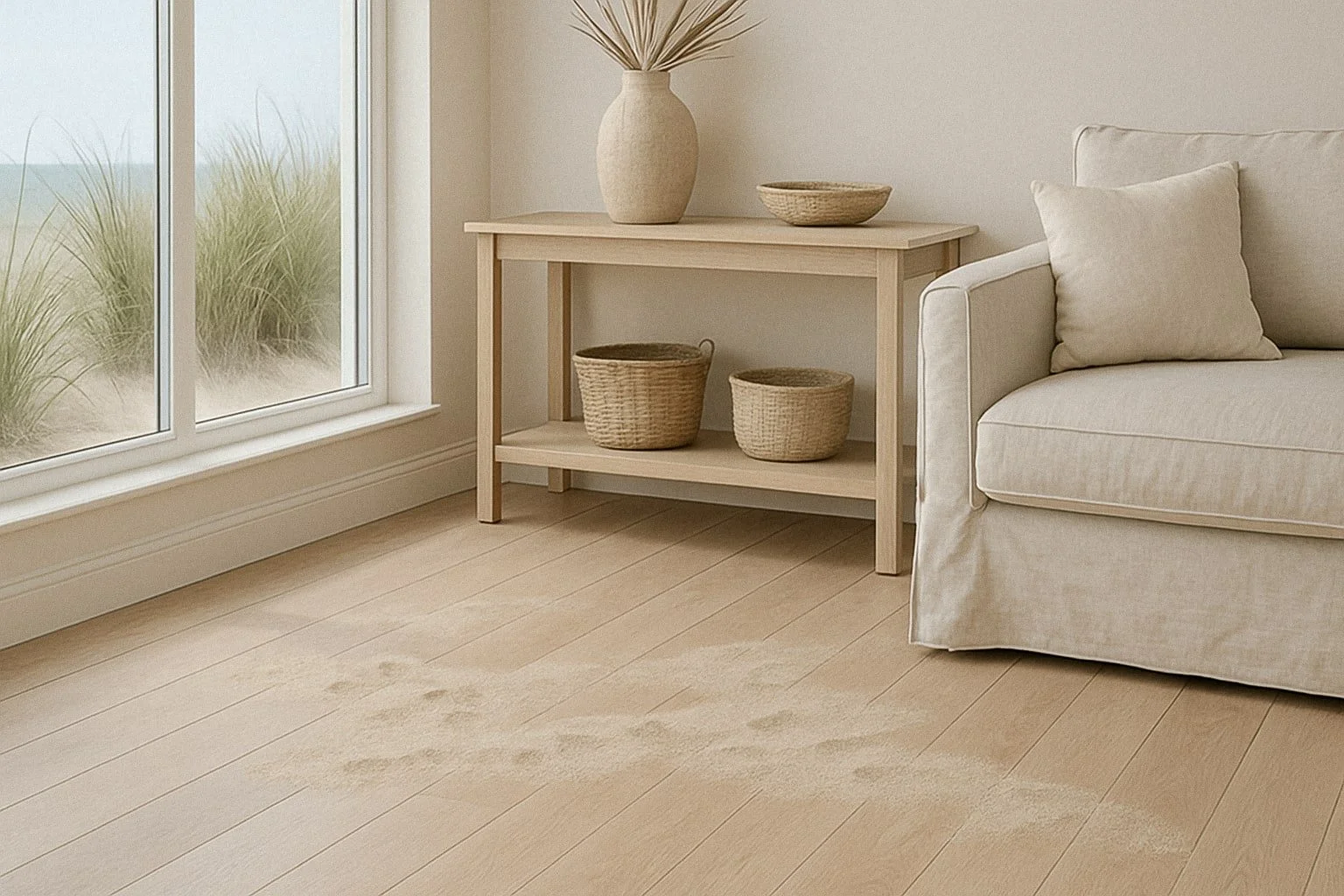
Timber Flooring for Coastal Homes
Living by the beach in New Zealand is a dream lifestyle - fresh ocean breezes, endless sand, and stunning views. But coastal living also brings unique challenges for your home, particularly when it comes to timber flooring. Salt air, humidity, sunlight, and sand can all affect how your floor looks and performs over time.
The good news? With the right flooring choice and some simple care practices, your timber floors can stay beautiful and durable for years.
Here’s your guide to selecting the best flooring for coastal homes and keeping it in top condition.
Choosing the Right Timber Floor for Coastal Living
1. Opt for Engineered Timber Flooring
New Zealand’s coastal climate often means high humidity and temperature changes. Unlike solid timber, engineered flooring is built with multiple layers, giving it superior stability and resistance to moisture. This makes it far less prone to shrinking, cupping, or warping - perfect for a beachside home.
2. Consider Rustic Grades and Texture
Beach houses are meant to feel relaxed and inviting. Choosing a rustic or farmhouse grade timber brings natural character with knots, grains, and variations. Not only is this often more affordable, but it also helps hide the small marks or scratches that inevitably come with sandy feet and seaside living.
3. Choose Coastal-Friendly Colours
While dark timber floors look elegant, they can highlight dust, sand, and salt residue. Light, natural tones such as whites, greys, and nude washes are much more forgiving in a coastal setting. These colours reflect the breezy, laid-back vibe of beach living while making day-to-day cleaning easier.
4. Think About Board Widths
Wider timber boards are a growing trend and suit coastal homes perfectly. They create an open, spacious feel - ideal for making smaller beach houses look bigger and more relaxed.
Caring for Timber Floors in Coastal Homes
1. Keep Sand Outside
Sand is one of timber’s biggest enemies. Use quality doormats at every entrance and encourage family and guests to wipe their feet. Better yet, keep a shoe basket or bin outside for sandals, jandals, and sneakers.
2. Rinse and Dry Before Coming In
If you have an outdoor shower, ask guests to rinse off and dry before entering. This stops salt water and extra moisture from being carried inside and damaging your floors.
3. Protect Against Sun Damage
Coastal homes often welcome in natural light and sea breezes. However, UV rays can fade or darken timber over time. Use blinds, curtains, awnings, or UV-treated windows to filter sunlight and slow down colour change, especially in north-facing rooms.
4. Sweep and Vacuum Regularly
Even tiny sand particles act like sandpaper on timber. Sweep or vacuum daily using a soft brush attachment, or use a slightly damp microfibre mop to collect dust and grit without scratching.
5. Clean with the Right Products
Every timber floor finish has specific cleaning requirements. Always use the recommended cleaner for your floor type. At Timber Flooring Specialists, we provide our clients with the correct cleaner to get them started. This ensures you protect the finish and prolong the life of your investment.
Bringing It All Together
A coastal lifestyle doesn’t mean compromising on style. With the right flooring choice - like engineered timber in light tones and consistent care, your floors will withstand the salt, sun, and sand that come with beachside living.
At Timber Flooring Specialists, we’ve helped countless clients create stunning coastal homes that balance beauty with durability. Whether you’re choosing flooring for a new build or refreshing your existing beach house, our team can help you find the perfect solution.
Contact us today for expert advice on timber flooring for coastal homes.
